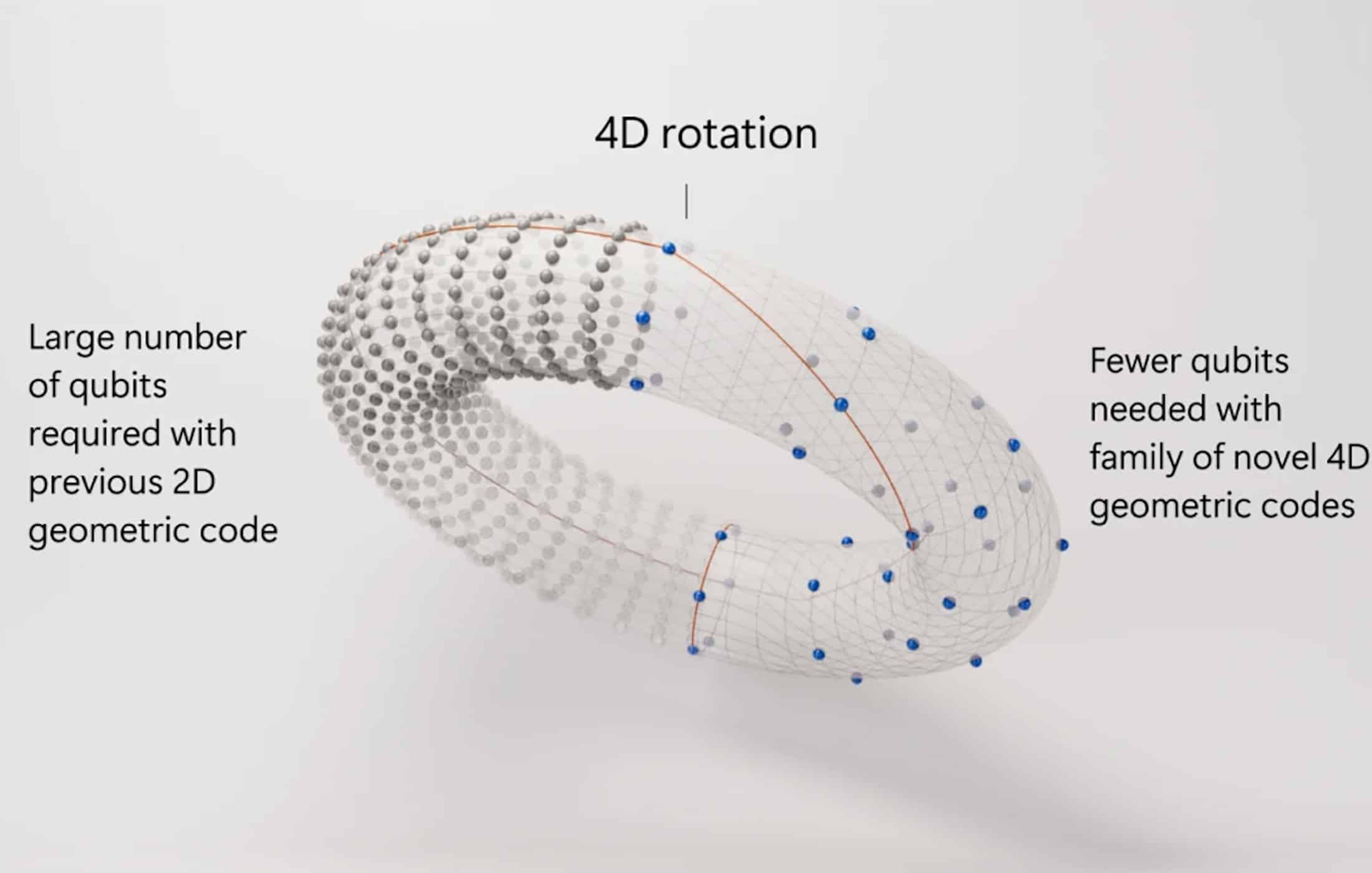Predicting 2030: Microsoft Unveils New 4D Quantum Error-Correcting Codes

Microsoft’s quantum research team announced a new family of four-dimensional (4D) geometric quantum error-correcting codes (presented in a recent preprint and blog post) that promise dramatic performance gains over today’s standard 2D surface codes. These 4D LDPC codes (low-density parity-check codes) can achieve 1,000× lower logical error rates and require far fewer physical qubits per logical qubit – Microsoft claims about a 5× reduction in overhead – compared to the best 2D surface code schemes. The trick is to use an extra spatial dimension in the code’s lattice structure, essentially arranging qubits in a hypercube-like geometry. This higher-dimensional coding gives the error-correcting code more pathways to detect and fix errors in one go, enabling single-shot error correction (only one round of measurement needed, instead of many iterative rounds). In simpler terms, the 4D code can catch errors more efficiently and compress the redundancy needed, meaning a fault-tolerant quantum computer could be built with significantly fewer qubits than previously thought.
For more information see: “Microsoft Unveils New 4D Quantum Error-Correcting Codes.”
The implications of this advance are substantial. Error correction has been one of the biggest roadblocks to scaling quantum computers – traditional surface codes might need thousands of physical qubits to stabilize just one logical qubit at very low error rates. Microsoft’s 4D codes attack this problem head-on, potentially cutting down that overhead by an order of magnitude. If a logical qubit can be maintained with, say, tens of physical qubits instead of hundreds or thousands, then a future quantum machine capable of breaking encryption becomes much more feasible with a lower total qubit count. Marin Ivezic (the article’s author) notes that this breakthrough comes amid a flurry of recent quantum progress – including Gidney’s algorithmic improvement and record-high hardware fidelities – all of which accelerate the timeline for a cryptographically relevant quantum computer. In fact, based on the momentum of these developments, the author moved up his own Q-Day forecast from 2032 to around 2030. Microsoft’s 4D code is a big piece of that puzzle: it suggests next-generation error correction will make quantum hardware requirements more practical, complementing the algorithm and hardware gains seen elsewhere.
Q-Day Impact: By vastly reducing the qubit overhead for error correction, Microsoft’s 4D codes could speed up the arrival of a viable code-breaking quantum computer – reinforcing recent predictions that Q-Day may come as early as 2030.
Quantum Upside & Quantum Risk - Handled
My company - Applied Quantum - helps governments, enterprises, and investors prepare for both the upside and the risk of quantum technologies. We deliver concise board and investor briefings; demystify quantum computing, sensing, and communications; craft national and corporate strategies to capture advantage; and turn plans into delivery. We help you mitigate the cquantum risk by executing crypto‑inventory, crypto‑agility implementation, PQC migration, and broader defenses against the quantum threat. We run vendor due diligence, proof‑of‑value pilots, standards and policy alignment, workforce training, and procurement support, then oversee implementation across your organization. Contact me if you want help.